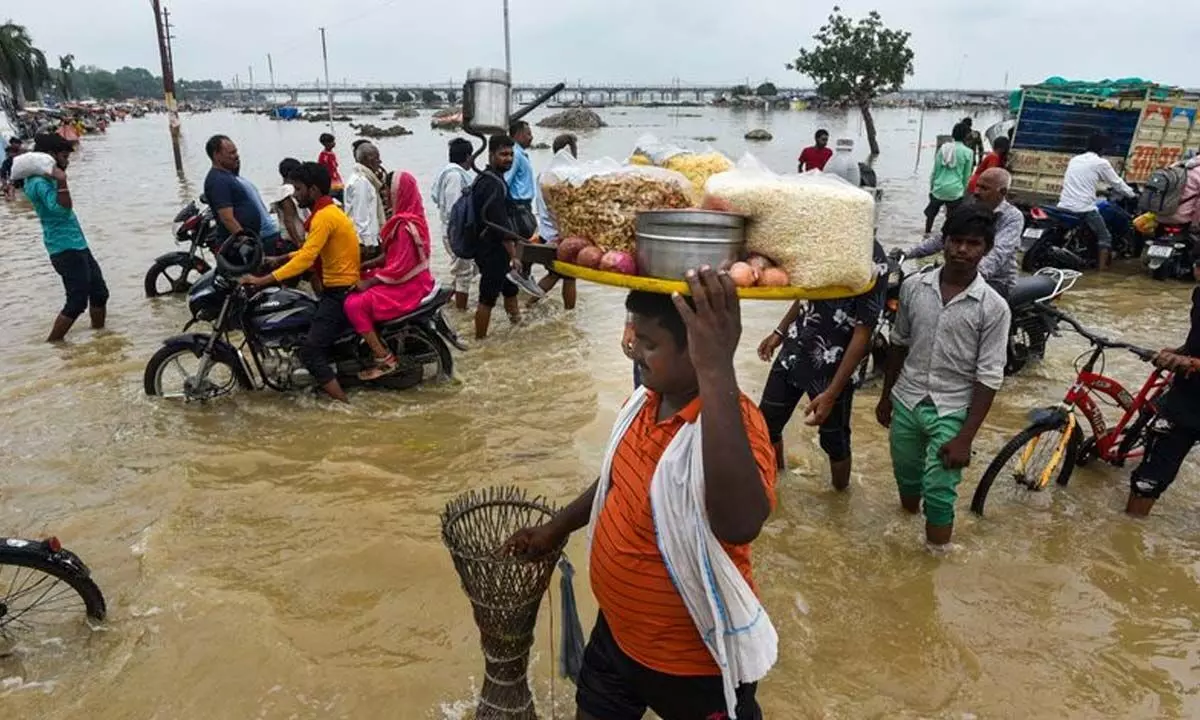Should utilise Met’s improved heavy rainfall forecasts to save lives, property: IMD chief
Share :

His remarks came amid claims by the Kerala government about IMD’s failure to predict extreme rainfall, which resulted in a series of landslides in the Wayanad district
New Delhi: India Meteorological Department (IMD) chief Mrutyunjay Mohapatra on Tuesday said the agency’s heavy rainfall forecasts had improved by 30 to 40 per cent over the past five years and should be utilised to minimise the loss of lives and property during extreme precipitation events.
His remarks came amid claims by the Kerala government about IMD’s failure to predict extreme rainfall, which resulted in a series of landslides in the Wayanad district on July 30, leading to 226 deaths.
“There has been a 30 to 40 per cent improvement in the IMD’s heavy rainfall prediction accuracy over the last five years, and it could further improve by 10 to 15 per cent in the next five to seven years with the augmentation of the observation network and numerical modelling systems,” Mohapatra said in a video message played at an event here.
At present, the weather agency predicts rainfall at the meteorological subdivision and district levels with an accuracy of 80 to 90 per cent 24 hours ahead and 60 per cent with a lead time of five days, he said.
“While IMD is improving its forecast accuracy, its predictions should be utilised to minimise the loss of lives and property,” Mohapatra said.
Scientists attributed the Wayanad landslides to a deadly mix of forest cover loss, mining in the fragile terrain and a prolonged spell of rain followed by an extreme precipitation event.
Kerala Chief Minister Pinarai Vijayan last week said IMD had only issued an ‘orange’ alert in Wayanad ahead of the landslides. However, the district received more than 572 mm of rainfall, which was extremely higher than what was predicted by IMD.
Mohapatra said there had been immense progress in managing adverse weather-related disasters in India during the monsoon season due to improvements in early warning systems and the delivery of weather and climate-related information to different stakeholders, including the general public and disaster managers.
The extremely heavy rainfall events are mesoscale in nature, occurring in small areas. Therefore, very intense observational systems are required to predict such events, he said.
IMD utilises data from approximately 6,850 rain gauges, as well as satellites and radars, to predict rainfall across the country.
It plans to implement global, regional and hazard models to address different kinds of hazards occurring during the monsoon, including lightning, cyclones, heavy rain, thunderstorms, and heat waves (in areas not covered by the monsoon in the initial part of the season), the IMD chief said.
IMD currently provides impact-based forecasts and risk-based warnings at the district level. Digital granular data pertaining to socioeconomic parameters and geospatial information is needed to provide location-specific, hyper-local forecasts, he said.
For this, Mohapatra emphasised the need for collaboration among different stakeholders, including IMD, research institutions such as IITs, disaster managers, and policymakers.













